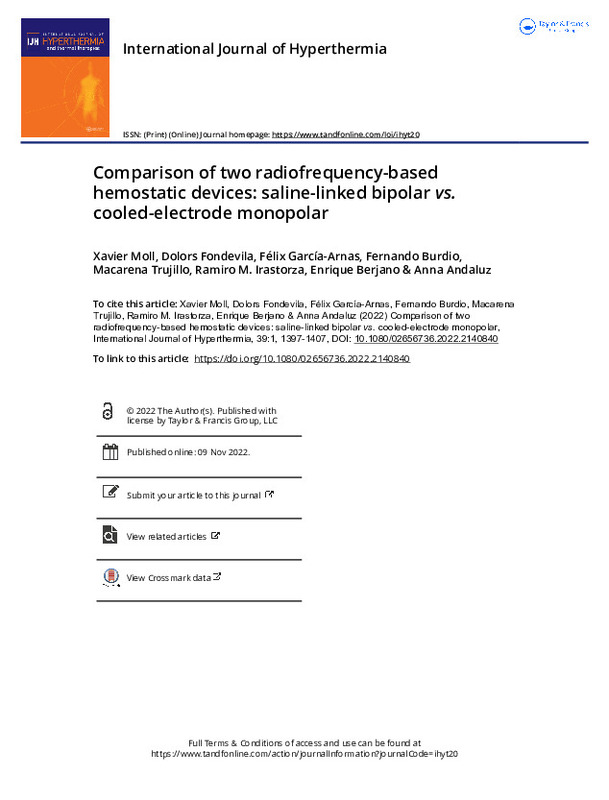JavaScript is disabled for your browser. Some features of this site may not work without it.
Buscar en RiuNet
Listar
Mi cuenta
Estadísticas
Ayuda RiuNet
Admin. UPV
Comparison of two radiofrequency-based hemostatic devices: saline-linked bipolar vs. cooled-electrode monopolar
Mostrar el registro completo del ítem
Moll, X.; Fondevila, D.; García-Arnás, F.; Burdio, F.; Trujillo Guillen, M.; Irastorza, RM.; Berjano, E.... (2022). Comparison of two radiofrequency-based hemostatic devices: saline-linked bipolar vs. cooled-electrode monopolar. International Journal of Hyperthermia. 39(1):1397-1407. https://doi.org/10.1080/02656736.2022.2140840
Por favor, use este identificador para citar o enlazar este ítem: http://hdl.handle.net/10251/190211
Ficheros en el ítem
Metadatos del ítem
| Título: | Comparison of two radiofrequency-based hemostatic devices: saline-linked bipolar vs. cooled-electrode monopolar | |
| Autor: | Moll, Xavier Fondevila, Dolors García-Arnás, Félix Burdio, Fernando Irastorza, Ramiro M. Andaluz, Anna | |
| Entidad UPV: |
|
|
| Fecha difusión: |
|
|
| Resumen: |
[EN] Purpose To characterize the coagulation zones created by two radiofrequency (RF)-based hemostatic devices: one comprised an internally cooled monopolar electrode and the other comprised externally irrigated bipolar ...[+]
|
|
| Palabras clave: |
|
|
| Derechos de uso: | Reconocimiento (by) | |
| Fuente: |
|
|
| DOI: |
|
|
| Editorial: |
|
|
| Versión del editor: | https://doi.org/10.1080/02656736.2022.2140840 | |
| Código del Proyecto: |
|
|
| Agradecimientos: |
Spanish Ministerio de Ciencia, Innovacion y Universidades MCIN/AEI/10.13039/501100011033 [Grants RTI2018-094357-B-C21 and RTI2018094357-B-C22], "Agencia Nacional de Promocion Cientifica y Tecnologica de Argentina" ...[+]
|
|
| Tipo: |
|









